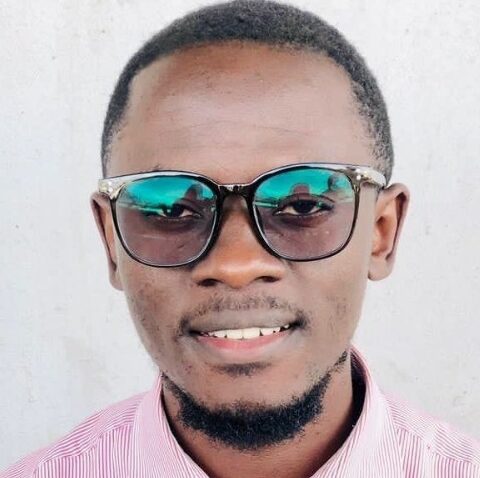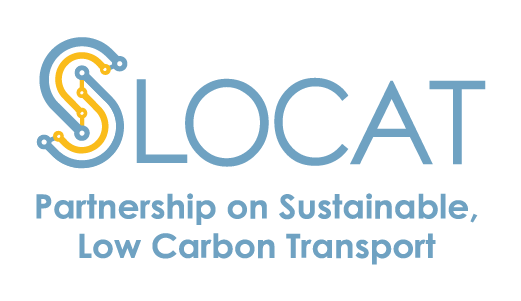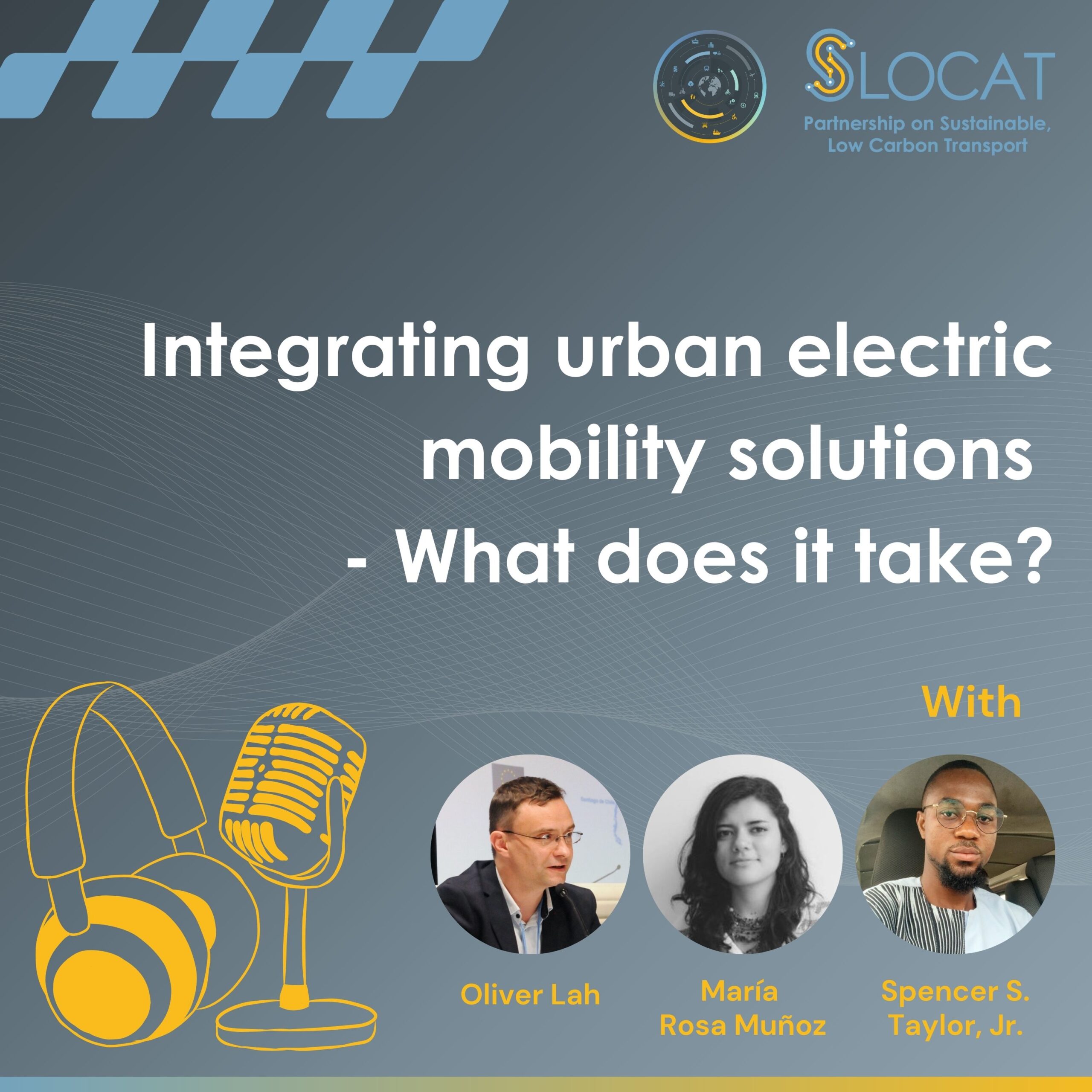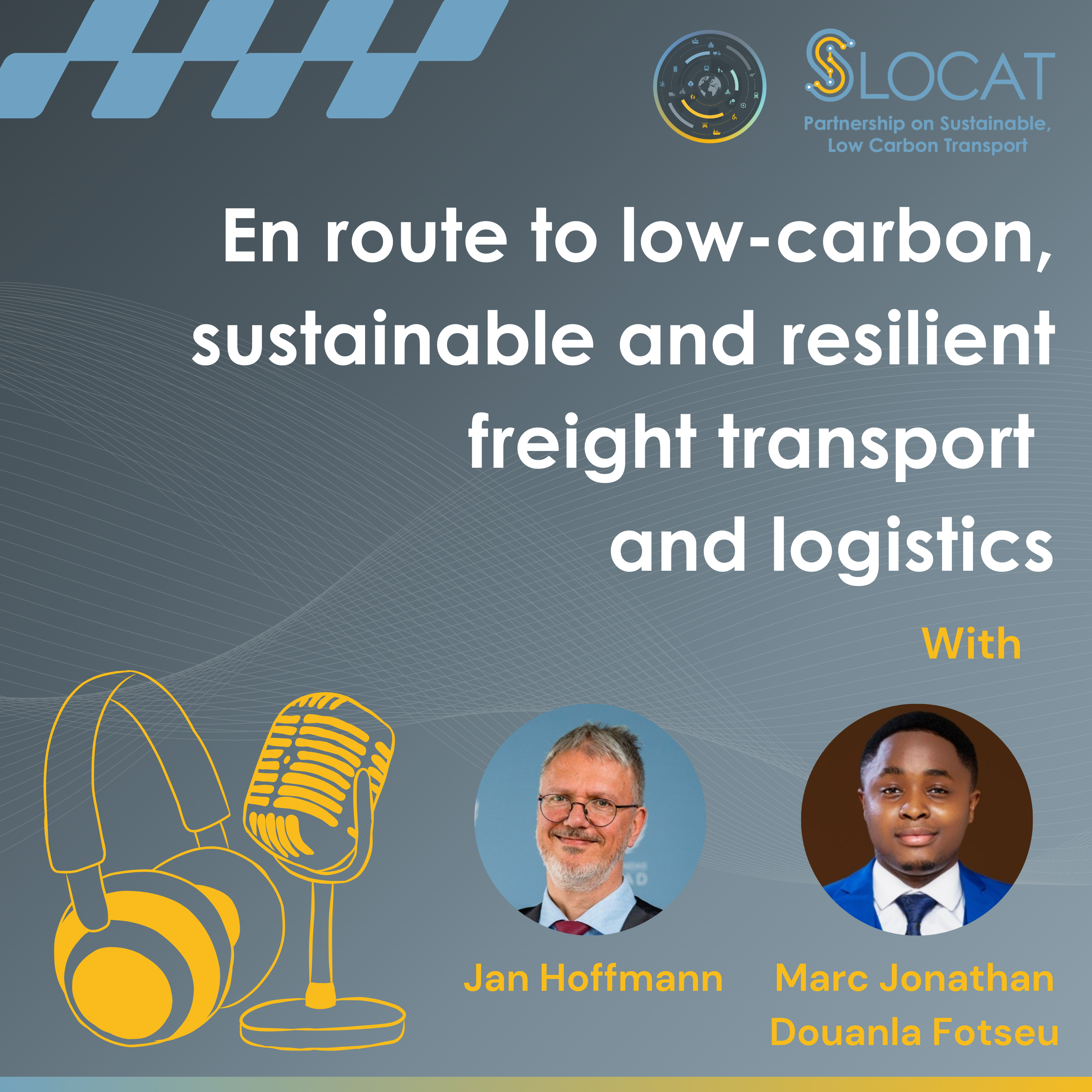Tough Questions, Smart Answers on All Things Transport, People and Planet
Stride & ride: Paving the path to active travel and health
Join our speakers!

Chilekwa O’Brien
Research Evaluation Associate
Zambia Road Safety Trust- PATH Partnership for Active Travel and Health

Carol Masingi
PhD Researcher
University of Groningen
About this episode
Come listen to the interesting conversation between Mr. Chilekwa O’Brien, Research Evaluation Associate, Zambia Road Safety Trust – PATH Partnership for Active Travel and Health, and Ms. Carol Masingi, PhD Researcher, University of Groningen!
During their conversation, Chilekwa highlights their efforts since 2014, supporting road safety and sustainable mobility in Zambia through several programmes, aimed at creating safer environments for pedestrians and cyclists, especially children. He outlines the significant role of walking and cycling in achieving Sustainable Development Goals (SDGs), emphasising how these modes of transport can reduce non-communicable diseases and improve road safety. Addressing gender disparities, Chilekwa points out societal perceptions and safety concerns that deter women from cycling, stressing the need for inclusive urban planning that integrates voices of persons with disabilities and promotes affordable access to bicycles. Looking ahead, he sees a positive future for cycling in Zambia and across Africa, advocating for improved cycling infrastructure and policy prioritisation to foster sustainable and equitable urban mobility.
We invite you to listen to their lively conversation now!
Transcript
00:00:07.03
Carol Masingi: Alright. Good morning. Good afternoon, or good evening. Depending on where you’re joining us today. Welcome to our podcast on tough questions, smart answers and all things, transport people and planet.
So today we are being joined by Mr. Chilekwa from the Zambia Road trust road and safety trust to be specific. My name is Carol, and I’m also a young leader in sustainable transport with SLOCAT and VREF.
I’m also a PhD. Researcher at the University of Groningen, and we would like to discuss active travel in Africa more specifically in the Zambian context. So, Mr. Chilekwa, would you like to introduce yourself, and sort of the work that you do at the Zambia Road Safety Trust.
0:00:59.37
Chilekwa O’Brien: Thank you, Carol. It’s a pleasure to be here. I’m looking forward to this conversation and sharing my perspective. I am Chilekwa O’Brien, joining from the Zambia Road Safety Trust. I support programme monitoring and evaluation on active mobility and sustainable transport.
0:01:17.30
Carol Masingi: Alright! Would you like to speak about some of the work that you’ve done so far with the Zambia Road Safety Trust, and maybe more specifically on the PATH Partnership for Active Travel and Health?
0:01:33.00
Chilekwa O’Brien: Yeah, sure, I think we are a government organisation that’s basically focused on road safety and sustainable mobility. And since our inception in 2014, we’ve been supporting, supplementing government efforts on issues of improving road safety and as well as promoting active transport.
So over the past years we have actively engaged and implemented initiatives aimed at improving road safety, such as the safer journeys to school for children, which is like our insignia programme that we’ve been running since 2020.
And we’re now running programmes around, creating pedestrian and cyclist friendly spaces where we’re promoting the implementation of cyclist friendly infrastructure as well as pedestrian spaces. So pretty much what we’re doing is at this focus of the pedestrians, especially the kids. And very, very recently we just launched the street for kids programme with a specific focus on improving the mobility of the school children and the kids and creating streets that are safer for the kids. So pretty much what we’re doing is anchored around bettering the mobility experience of the vulnerable users.
0:03:00.88
Carol Masingi: Yeah. And I think it’s interesting that you mentioned. Yeah, you know, the project that you’re doing most specifically in relation to building infrastructure and pedestrian oriented infrastructure. And because I think one of the challenges that within the African context that might be a challenge is the well, the absence of, for example, segregated lanes.
How do you think walking and cycling can help Zambia implement the sustainable development goals as well? More specifically speaking, towards SDG 3, which is also about good health and well-being, and also looking at creating sustainable cities and communities which relates to SDG 11.
0:03:47.16
Chilekwa O’Brien: I think, like I mentioned in your preamble Carol, the experience of Lusaka is not too different from the rest of Africa. You find that, like, in many developing world cities, here in Lusaka, abouts, 70% of our citizens, they walk and cycle as their daily mode of transport, often out of necessity.
So when you speak about the SDGs Agenda and how cycling has been supplementing on achieving this agenda, I would like to address it by considering 2 standpoints.
The first one is from the public health perspective, and the second one from the transport perspective. We understand from the public health perspective, that working on cycling promotes physical activity and exercise. And these two are very, very essential for improving public health and reducing the burden of non-communicable diseases, especially diabetes and cardiovascular diseases.
In the transport perspective we are looking at how best can we better the experience of the pedestrians and the cyclists to supplement the effort for improving road safety.
As you know, in Africa and Zambia at large, especially here in Lusaka, road traffic accidents are a leading cause of death, especially among the young people and and the children. So we’re looking at how best we can better the health and how best we can contribute to the SDGs agenda of having these tragic accidents?
So we are running, like I mentioned, the “Safer Journeys to Schools” programme, where we’re improving infrastructure around the school zones and also creating spaces that are pedestrian friendly. We feel that by implementing these measures we can possibly contribute to SDG 3 where we’re improving good health and well-being and definitely contributing to SDG 3.2 where we’re contributing to the reduction of road traffic injuries and fatalities. So not only that, we see that investing in these infrastructures can also contribute tremendously to creating more livable and people-centred communities that prioritise the needs of non-motorised transport users. So these, when you embrace these two, we see that we’re directly contributing to SDG 3.6 and SDG 11.2. So positively, this is how we’ve been able to harness the SDGs Agenda in Zambia. We’re piloting initiatives, low-cost initiatives that better the mobility experience of the vulnerable road users through the pilots of these two initiatives that I’ve just mentioned about.
0:07:01.69
Carol Masingi: Alright, and you also mentioned, well, making sure from just a pedestrian oriented perspective when you think about maybe some of the.. are there any gender disparities that I experienced within active travel? Do you find that there’s a situation where there are more males using non-motorised transport versus women. And how is it also received with children? For example, is it more of a thing that’s very popular in relation to children using NMT.
0:07:42.94
Chilekwa O’Brien: Of course, I think there are several factors that I would like to.. The disparities in terms of walking and cycling. I think there are certain factors that have been very, very instrumental in contributing to this disparity. And in trying to respond to a question I’d like to take maybe 2 instances.
Number one: we first have to understand the factors that exacerbate a bit these gender gaps, the disparity. You find that there are these societal perceptions. That cycling is not a suitable or feminine mode of transport for women and girls. So you see that over time these concerns, they’re taught at very, very younger ages, especially in girls. And then these girls grow into women who believe and grow the perception that the cycling environment is not really meant for them. So these factors and also issues concerning personal safety.
You know where there’s no proper NMT infrastructure designed in the urban design in many African cities, including Zambia, also disadvantage many ladies from participating in the cycling infrastructure, not also to forget that there is, you know, limited access to affordable bicycles, like, you know.
I think, in Africa, and Zambia in particular, the bicycle is very, very expensive and just this less accessibility also disadvantages many, many women from accessing the bicycles and also participating in cycling. So I think these are some of the factors that are affecting and actually exhibiting this disparity gap.
0:09:53.03
Carol Masingi: Okay. And well, you clearly mentioned that maybe the fact that, for example, factors like culture. And because I know that this is very much prevalent even in, for example, South Africa, that you don’t see a lot of women, for example, using bicycles to cycle. But you get a lot of women who walk to wherever they need to be, and also with men as well. And also because of the fact that, like you mentioned so clearly that there’s an association with, sort of, not like using.. Cycling is not really like a thing that happens quite a lot with women, for example. So also, I guess also, just talking about gender disparities. I also wanted to maybe highlight people who might have mobility challenges. And how is the approach in Zambia in relation to making sure that also, within that spectrum of providing mobility for people with maybe disabilities. How do you then include people with mobility challenges within the same context?
0:11:18.06
Chilekwa O’Brien: Yeah, one of the ways, I think, you know, because in the early stages we’ve established that there’s insufficient integration of gender responsive policies and strategies in transport planning and decision making, which entails that we do not have a group of these people at the transport decision making table. So their voices are not heard. They’re not integrated in transport planning. I think, one of the things that we’re.. We really have to look at to bridge this gap.. is to bring these people at the transport decision making table so that we have their voices heard. Okay.
For example, if we’re to invest in dedicated cycling infrastructure. Dedicated and integrated urban design that also creates spaces for the mobility needs of persons with disability. We are empowering them to have a voice at the transport decision-making table. So I think, going forward, this is the wave, and this is the vibration, and this is the step that we have to take where we integrate their voices in transport planning.
0:12:39.73
Carol Masingi: Yeah, I think it’s also very important when you think about inclusivity and equity within transport planning as well that all groups of people get involved and get considered. You’ve clearly highlighted that and thank you so much for that. So what do you think the future of cycling in Zambia is, in Zambian cities at large, or in the African context.
0:13.09.65
Chilekwa O’Brien: That’s a very, very good question. And, to be precise, I think, the future of cycling is positive, but I think in Africa and Zambia at large, this can take, you know, hold about both opportunities and challenges which will require concerted effort to address.
Maybe let me try by expressing, talking a bit about the opportunities of cycling in Africa at large, and Zambia in particular.
In the early preamble we’ve established that cultural perceptions and stereotypes are hugely associated with how we interpret cycling and walking in Africa. But there is a shift in this. Because many African cities, as you are aware, are undergoing increased urbanisation. And there is more exposure to global trends which actually presents an opportunity to shift the mindset of so many Africans, for example. Within Africa there are so many countries that serve as an inspiration. Inspirational models to how the cycling future of Africa can look like. We have seen many, many African cities that they’ve run successful walking and cycling programmes from Lagos to Lusaka, from Lusaka to Addis, from Addis to Kigali through the promotion of low-cost, effective programmes like the car free days where these programs, they’re educating us on the importance of walking and cycling, and why we should value them as you know, as the normal and most viable and empowering modes of transport.
We see many, many cities making, investing, you know, in walking infrastructure, where there’s more design coming on board, where there is now dedicated design for sidewalks, where cities are designing sidewalks, where people can just walk independently. Many other cities are coming on board to form policies around walking and cycling. These are some of the opportunities.
And, thirdly, I think, there is this trend of positioning cycling as a sustainable, and else promoting mode of transport which I feel, can resonate with police makers and the local communities at large.
Now, among the challenges is what you actually established in your early statement, Carol, I think, many African cities lack dedicated and well-designed cycling infrastructure which pose a safe risk to cyclists. Not only that, transportation, planning, and also decision making processes in African cities often prioritise, you know, private vehicles over sustainable modes like cycling.
I think changing this and integrating this can shape a more promising future for cycling both in Zambia as the country and the African cities, and we need a more robust and radical approach that should be, number one, prioritise and invest in high quality and integrated cycling infrastructure that promotes safety and connectivity.
In my country, for example, I’d like to raise an example of, you know, the sidewalks. You find that there are sidewalks in certain spaces, but these sidewalks are not continuous. So you would start from one point you’re walking along a sidewalk but you find that it ends at another point. But here we are saying for us to create a more promising future. The radical approach that we need is that we should integrate continuous sidewalks that are very, very connective from one point to another, and from that point to another point. To achieve this, it causes strengthening institutional capacity and cross-sector collaboration to mainstream cycling in urban planning and policymaking.
I think it is, such initiatives. It is such holistic programmes that address the cultural and economic and genderated barriers to cycling. So ideally, we are at the age where many cities are realising that cycling and working are key in meeting the SDGs agenda and also in meeting the climate agenda. So the future is positive. The future is very, very promising to achieve this as a continent.
0:18.20.82
Carol Masingi: Alright, this was a very interesting perspective from you Chilekwa and yeah, I also think that it was nice to hear from a different perspective being that I’m South African myself. So thank you so much for joining us today and for having time to allow us to have this discussion with you and yeah, and for providing these amazing insights for our podcast.
0:18.45.72
Chilekwa O’Brien: Thank you, Carol. It’s always a pleasure. And really looking forward to the next series. Hopefully, I’ll be invited again.
0:18.53.28
Carol Masingi: Yes, thank you so much. So we have come to the end of today’s episode. And for our viewers and followers and listeners. Please stay tuned for more upcoming podcasts episodes with SLOCAT. Thank you so much.
0:19.08.69
Chilekwa O’Brien: Thank you. Bye, bye.


